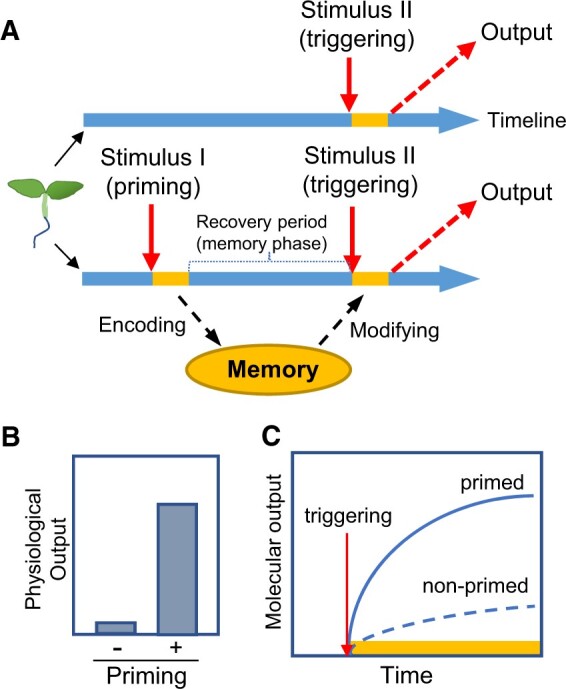Figure 1.

Acclimation to intermittent abiotic stress, a defense priming behavior of plants. A, A simplified diagram of the relationship between priming, triggering, memory, and output in the acclimation to recurring stress. Plants of the same genotype are subjected to two stress regimes that are run in parallel (timelines shown from left to right): nonprimed (top) and primed by Stimulus I (below). A recovery period or memory phase is introduced for the primed plants before triggering with Stimulus II. The nonprimed plants receive triggering at the same time as the primed plants. Physiological and molecular outputs are analyzed at an appropriate time point after or during triggering treatment. Memory encoded by priming is manifested by a modified output of primed versus nonprimed plants. The yellow blocks in the timelines represent the duration of stimulus application. B, Physiological outputs of primed (+) and nonprimed (−) plants subjected to the stress treatments shown in (A). The physiological outputs of primed plants are often referred to as acquired tolerance to abiotic stress. C, Molecular outputs of primed and nonprimed plants during triggering treatment (represented by the yellow bar). The primed output is stronger and occurs more rapidly than the nonprimed output.
